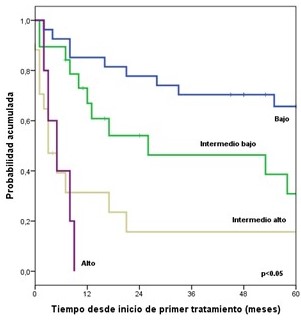Anaplastic large T-cell lymphoma: 10-year experience at the National Institute of Neoplastic Diseases, Lima – Peru
Linfoma de células grandes T anaplásico: experiencia de 10 años en el Instituto Nacional de Enfermedades Neoplásicas, Lima - Perú
DOI:
https://doi.org/10.25176/RFMH.v22i3.5027Keywords:
Lymphoma, large-cell, Anaplastic, Anaplastic lymphoma kinase, Survival rateAbstract
Introduction: Anaplastic Large T-Cell Lymphoma is an infrequent pathology, determined by the expression of CD30, with different characteristics in its presentation and being more aggressive according to the expression of ALK.
Objectives: The present study seeks to determine the epidemiological, clinicopathological and prognostic characteristics of patients with Anaplastic Large T-Cell Lymphoma.
Methods: Descriptive, retrospective study of patients diagnosed with Anaplastic Large T-Cell Lymphoma of the National Institute of Neoplastic Diseases (INEN) between 2006 and 2016.
Results: The pathology of 86 patients was analyzed and reviewed, 57% were men and 33% women, of the total population 21.9% were positive for ALK. 48 of the patients were found in CD I and II and 36 between stages III and IV. 57 patients had low or low-intermediate risk, while 26 had high-intermediate and high risk. The estimated overall survival was 40.8% at 5 years, in the group of patients with ALK + it was 67.4% and in the group with ALK- it was estimated at 30.2%.
Conclusions: Anaplastic Large T-Cell Lymphoma is an aggressive disease, with a heterogeneous distribution with respect to age and slightly more frequent in males, with ALK and the international prognostic index as important prognostic factors.
Downloads

Downloads
Published
How to Cite
Issue
Section
License
Copyright (c) 2022 Revista de la Facultad de Medicina Humana

This work is licensed under a Creative Commons Attribution 4.0 International License.



































